Let’s call it like it is: fibre isn’t sexy. It’s not flashy, not trending on TikTok, and definitely not the kind of thing that gets spotlighted in glossy packaging.
But when you’re dealing with bloating, irregular digestion, stubborn weight, or sudden energy crashes, fibre may be the missing piece you’ve been ignoring.
How Much Fiber Do You Really Need? (And Why It Matters More Than You Think)
Let’s be honest — most of us have no idea how much fibre we’re supposed to eat, let alone how much we’re actually getting. And in today’s world of processed snacks and “healthy” marketing, it’s easy to assume we’re covered… when we’re really not.
The truth? Most people are way behind on fibre. Even things like “high-fibre” granola bars or oatmeal cookies usually fall short.
But here’s the good news: getting enough fibre does not require supplements, powders, or turning your life upside down. You just need a little know-how — and some simple shifts in your everyday meals.
Let’s break it down.
So, How Much Fibre Do You Actually Need?
According to health experts (like the Mayo Clinic and NHS), here’s the daily goal:
-
Women under 50: 25 grams
-
Men under 50: 38 grams
-
Women over 50: 21 grams
-
Men over 50: 30 grams
Now here’s the kicker: the average person is getting less than 15 grams a day. That’s a pretty big gap.
And it’s not just about digestion — low fibre can affect:
-
Blood sugar levels
-
Heart health
-
Immune function
-
And even how full and satisfied you feel after eating
Soluble vs. Insoluble Fibre: What’s the Difference?
Fibre isn’t just one thing — it comes in two forms, and both play different (but equally important) roles in your body.
🌀 Soluble Fibre
-
Dissolves in water to form a gel-like substance
-
Slows digestion
-
Helps with blood sugar control and keeping you full longer
-
Sources: oats, apples, beans, chia seeds
Think of it as your body’s traffic controller — keeping things smooth and steady.
🧹 Insoluble Fibre
-
Doesn’t dissolve in water
-
Adds bulk to your stool and keeps things moving
-
Prevents constipation and keeps your digestive system in check
-
Sources: whole grains, leafy greens, brown rice, nuts
This is your internal cleaning crew — sweeping out your system and keeping everything flowing.
Why Fibre is a Game-Changer (Not Just for Your Gut)
Most people think fibre is just about “regularity.” But when you start getting enough, you’ll notice changes that go way beyond the bathroom.
Here’s what fibre really does:
✅ Improves digestion (no more bloating, constipation, or bathroom drama)
✅ Feeds your gut bacteria, which supports immunity and even mental clarity
✅ Keeps you fuller longer, helping reduce snacking and overeating
✅ Stabilizes blood sugar, avoiding energy crashes
✅ Lowers LDL (bad) cholesterol, supporting heart health
The Bottom Line
You don’t need to chase fibre with fancy supplements or meal plans. You just need real, whole foods — and a little awareness.
Once you start building fibre into your daily habits, your body (and mind) will thank you.
The Best Fibre Rich Foods to Add to Your Routine

🥗 Fruits & Vegetables (Always a Win)
- Fruits: apples (with skin), pears, oranges, bananas, berries
- Vegetables: carrots, spinach, broccoli, cucumbers
- These easily blend into curries, smoothies, or even simple salads.
🍚 Whole Grains (Ditch the White)
- Replace white rice with brown rice
- Swap sugary cereals for oats 3 days a week
- Choose whole wheat bread instead of white
- Try quinoa, barley, or whole grain pasta as alternatives
🫘 Legumes (Budget-Friendly Superfoods)
Legumes deserve their spotlight. They’re affordable, filling, and fibre-packed:
- Chickpeas, lentils, black beans, kidney beans
🌱 Substitute meat with legumes for 1–2 dinners per week — your gut will thank you.
🌰 Small Additions That Add Up
- Chia seeds, flaxseeds, almonds, walnuts, sunflower seeds
- Just 1 tbsp of chia in your smoothie or a handful of nuts with fruit makes a big difference
⚠️ They’re calorie-dense, so keep portions moderate.
A Realistic High-Fibre Day (Without Feeling Like You’re on a Diet)
To give you an idea of how this works in practice, here’s a full day of meals that delivers around 30–35 grams of fibre.
Day High-Fibre Meal Plan (Approx. 35g Fibre)
| Meal | What’s On The Plate | Approx. Fibre |
|---|---|---|
| Breakfast | Oatmeal topped with banana, chia seeds, and almonds | 9g |
| Snack | Apple (with skin) + a tablespoon of peanut butter | 5g |
| Lunch | Moong dal + brown rice + spinach salad with cucumber and lemon | 10g |
| Snack | Roasted chickpeas or black chana (half cup) + green tea | 4g |
| Dinner | Quinoa bowl with roasted vegetables and a spoon of flaxseeds | 7g |
| Total | 35g |
Adding More Fibre Doesn’t Mean Rethinking Your Whole Diet
Boosting your fibre intake isn’t about cutting foods out — it’s about making smarter swaps.
Love your morning toast? Go for whole grain, and top it with avocado and seeds instead of jam. Making a smoothie? Toss in some flaxseed or spinach. Cooking rice? Try replacing half with brown rice or barley.
One underrated trick: add legumes to meals you already love. Throw lentils into soups, mash beans into dips, or sprinkle some cooked chickpeas onto your salad. They’re fibre-rich, filling, and soak up flavour like a dream.
Snacks? Keep it Simple.
Fruit, roasted nuts, veggie sticks with hummus — these beat any “miracle” snack bar, hands down.
The key is consistency. You don’t have to hit 38g of fibre every day — just aim close most days and your digestion, skin, energy, and even weight will improve over time.
Oh — and drink your water. Seriously.
Fibre works best with fluids. Without enough water, it can actually make things worse (think bloating and cramps). Try drinking a glass with every meal, and one more with fibre-rich snacks.
Start in the kitchen.
No fancy health stores needed — just purposeful choices at your usual grocery shop. Check out the attached list for affordable, high-fibre staples to stock up on.
High-Fibre Grocery List (Simple, Budget-Friendly)
| Category | Items to Include |
|---|---|
| Fruits | Apples (with skin), pears, bananas, oranges, berries (fresh or frozen), papaya, guava |
| Vegetables | Carrots, spinach, broccoli, cucumbers, cabbage, green peas, bottle gourd, cauliflower |
| Whole Grains | Oats, whole wheat roti, brown rice, barley, quinoa, whole grain pasta, millet (bajra, jowar) |
| Legumes/Beans | Moong dal, masoor dal, chana dal, chickpeas, black beans, kidney beans, lentils (all types) |
| Nuts/Seeds | Almonds, walnuts, flaxseeds, chia seeds, pumpkin seeds, sunflower seeds |
| Others | Psyllium husk (optional), air-popped popcorn, bran cereal (unsweetened) |
Boosting Your Fibre? Keep It Simple.
You don’t need to obsess over grams or count every seed. Just aim to include fibre-rich foods in every meal, and it adds up naturally.
Keep It Minimal, Keep It Smart
Stock your kitchen with just 2–3 types of grains, legumes, fruits, and veggies at any time. That way, building high-fibre meals becomes easy and automatic.
Common Mistakes When Adding Fibre — And How to Avoid Them
🚫 1. Adding Too Much, Too Fast
Jumping from low fibre to high fibre overnight can lead to bloating, gas, and cramps.
✅ Fix: Increase fibre gradually — start with breakfast, then add a high-fibre snack, and build from there.
🚱 2. Not Drinking Enough Water
Fibre needs water to work. Without it, you may feel worse — think constipation or bloating.
✅ Fix: Drink at least 2.5–3 litres a day, especially if you’re eating lots of dry fibre (like oats, seeds, or crackers).
🏷️ 3. Relying on Packaged “High-Fibre” Foods
Not all fibre-labelled foods are healthy — many are loaded with sugar and low-quality fats.
✅ Fix: Focus on whole foods first — fruits, veggies, legumes, whole grains. Save powders and bars as a backup.
⚠️ When to Be Cautious
If you have gut conditions like IBS, Crohn’s, or Ulcerative Colitis, some types of fibre can trigger flare-ups. Raw veggies and wheat bran (insoluble fibre) might irritate your gut, while oats, bananas, and cooked carrots (soluble fibre) are often easier to tolerate.
➡️ Talk to your doctor or dietitian before making big changes.
A Simple 7-Day High-Fibre Meal Plan (No Perfection Needed)
Here’s a sample weekly plan to gently increase your fibre intake — feel free to mix and match based on your preferences.
Day 1
-
Breakfast: Oatmeal with flaxseed + banana
-
Lunch: Red lentil dal + brown rice + sautéed spinach
-
Snack: Apple + peanut butter
-
Dinner: Quinoa salad with chickpeas and cucumbers
-
Snack: Handful of almonds
Day 2
-
Breakfast: Whole grain toast + tomato + avocado
-
Lunch: Moong dal + mint chutney + carrot sticks
-
Snack: Orange or papaya
-
Dinner: Grilled paneer + mixed veggie soup
-
Snack: Roasted sunflower seeds
Day 3
-
Breakfast: Yogurt + chia + berries
-
Lunch: Rajma + brown rice + cabbage salad
-
Snack: Cucumber + hummus
-
Dinner: Barley stir-fry with tofu and vegetables
-
Snack: Handful of cashews and peanuts
Day 4
-
Breakfast: Smoothie (banana, spinach, oats, chia)
-
Lunch: Chickpea salad wrap + soup
-
Snack: Guava or pear
-
Dinner: Grilled chicken or paneer + millet roti + boiled veggies
-
Snack: Walnuts
Day 5
-
Breakfast: Vegetable omelette
-
Lunch: Chana dal + beetroot salad
-
Snack: Boiled egg + orange
-
Dinner: Baked sweet potato + green peas + quinoa
-
Snack: Flaxseed cracker
Day 6
-
Breakfast: Unsweetened muesli + milk + chopped dates
-
Lunch: Black-eyed pea curry + basmati rice + steamed broccoli
-
Snack: Carrot + hummus
-
Dinner: Masala dal soup + veggie patties
-
Snack: Chia pudding or banana
Day 7
-
Breakfast: Bran flour paratha + curd + pickle
-
Lunch: Veg khichdi (brown rice) + salad
-
Snack: Fresh fruit plate (melon, kiwi, pomegranate)
-
Dinner: Stir-fried tofu + red peppers + quinoa
-
Snack: Herbal tea + trail mix
Monitoring Progress and Not Being Obsessive

You Don’t Need to Count Every Gram
Forget the calorie apps and food scales — instead, look for real signs of progress:
-
Are your bathroom trips smoother?
-
Are you staying full between meals?
-
Do you have more energy and less bloating than last week?
That’s your body telling you things are working.
If it helps, jot down meals in a simple journal — not to obsess, just as a gentle reminder to include fiber at each meal.
Fibre: The Silent MVP of Weight Loss
Fibre isn’t flashy, but it works. It helps you feel full, keeps blood sugar steady, and curbs random snack cravings — all without requiring willpower or strict rules.
You naturally eat less when your meals are rich in fibre — not because you’re forcing it, but because your body feels satisfied. Research shows even small increases in fibre can lead to gradual fat loss over time.
Feeling overwhelmed by diets? Start here. Fibre is a low-effort, high-impact change.
How to Stay Consistent (Without Overthinking It)
-
Include 2 fibre-rich foods per meal — like oats + banana, dal + rice, or roti + sabzi + salad.
-
Prep simple snacks like boiled chickpeas or cut fruit so you’re not tempted by junk.
-
Drink water regularly — use mealtime as a reminder, or set a phone alert.
-
Stay accountable — share your wins or food swaps with a friend or partner.
Skip a day? No big deal. Just start again tomorrow. Your gut won’t hold a grudge.
In a Nutshell: Fibre Quietly Fixes a Lot
It won’t shout for attention, but fibre supports your digestion, blood sugar, energy, skin, and weight — all in the background.
It’s not about perfection or turning into a health guru. Just a few smart swaps, like:
-
Oats for breakfast
-
A scoop of dal at lunch
-
Extra salad at dinner
-
Seeds sprinkled here and there
-
And, of course, enough water
No fuss. Just results. Your body will thank you — quietly, but clearly.

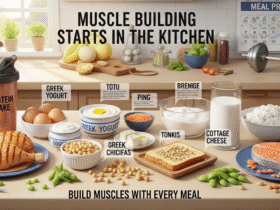


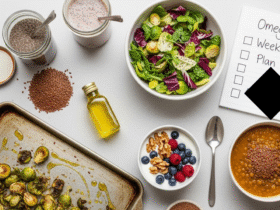
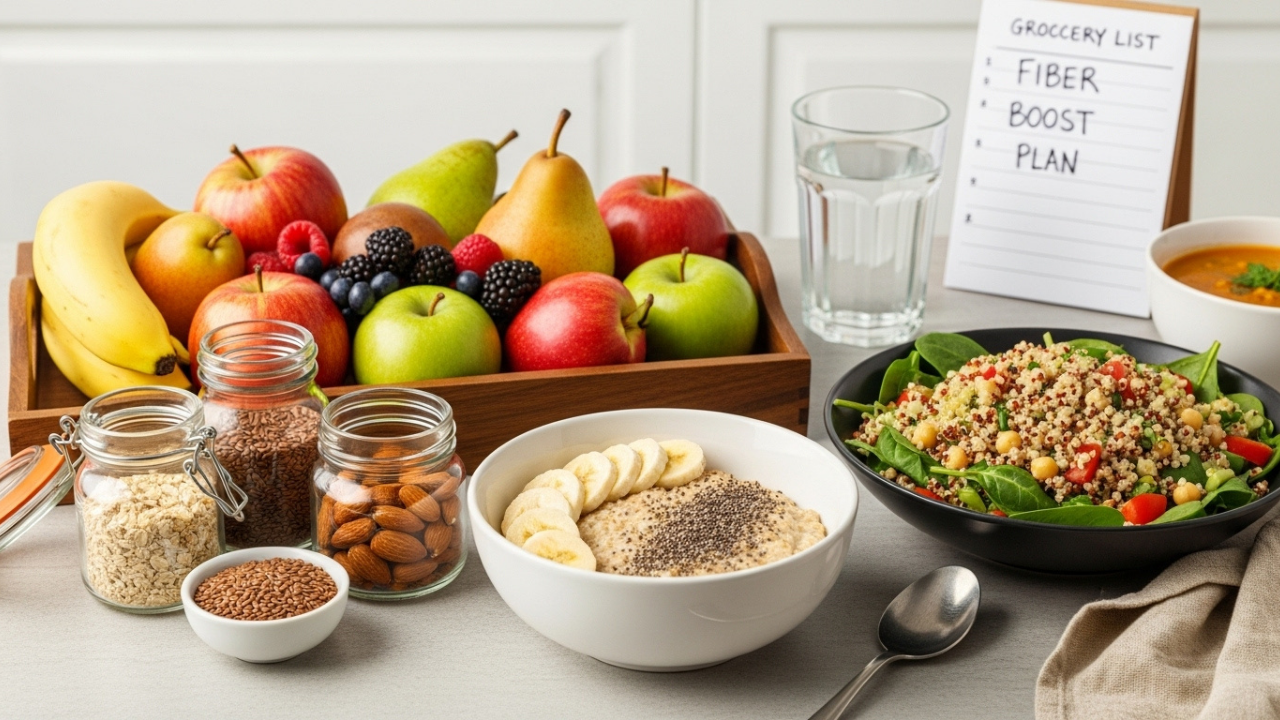


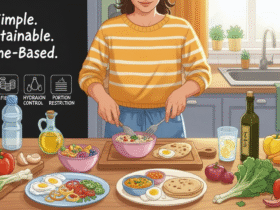

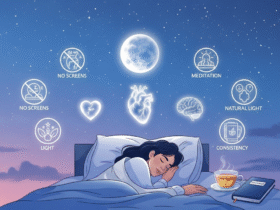

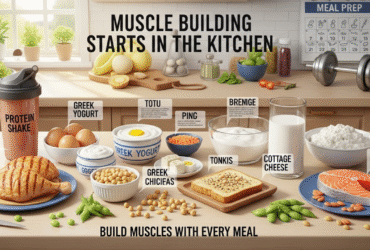

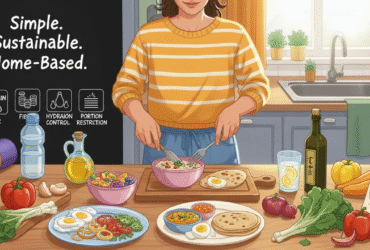
Leave a Reply